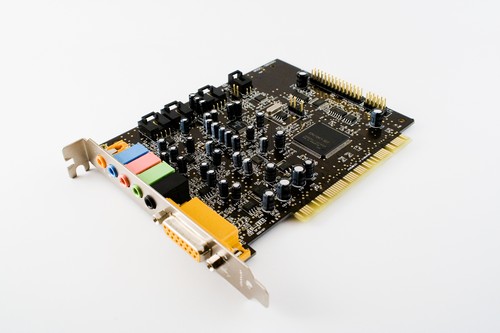USB turntables are more expensive than higher end CD players, and create worse sound. At around the $150 mark, by buying a USB turntable you are getting a record player that solely functions as a vinyl recorder, since the quality of its record playing is substandard. Many people will be attracted to the ease of use of USB turntables, but there are ways of digitising vinyl that avoid having to buy turntables with USB ports.
This is especially useful for people who already own a good quality turntable. DJ turntables, vintage turntables or high end audiophile turntables will all do the trick. Extra equipment will need to be purchased to do this, but the quality of the converted music will be much better. As an added bonus, if you have any tapes lying around that need to be digitised, the techniques in this article will work for them as well!
1. Using a phono to USB converter
The output format that is common to turntables of all eras is phono. Computers do not support phono input, so an external device must be used to convert the phono signal to USB. There is one product that stands above the rest as the king of this unique task. With almost universal rave reviews, check out the ART V2 USB Phono Plus DJ Preamp.
If your only computer is a laptop, then this is the best way of recording good quality sound to it without having to use USB turntables. PCs have sound cards that allow other methods, but since this wonderful device outputs to USB, you can plug it in to one of the USB ports on your laptop. Many people assume that the microphone port is the equivalent of a line in, however the microphone port is specifically designed for computer microphones so the quality of the recording will be poorer.
Another wonderful thing about this product is that it can function purely as a preamp, a device that increases the volume of the turntables output without increasing the ‘noise’ (that background sound you hear when you can hear when you turn a sound system up really loud even when it’s not playing). So if you have a system that doesn’t have a built in phono preamp, this will do the job for you. It also lets you monitor the sound coming from the preamp, a great feature that allows you to listen to the output using headphones so that you can monitor the quality whilst recording to your computer. For some strange reason, this unit does not ship with a USB cable, but one can be bought from your local electronics store for $10. In terms of ease of use, this product is second to none, and some complications associated with other methods, such as hum, are non-existent.
- Tip: Make sure stereo recording is enabled in Windows. Click Start > Control Panel > Hardware and Sound > Sound, then click the Recording tab at the top. Right click on the device and click properties. In the drop down menu, select 2 channel 16 bit 44100 Hz.
2. Using your computer’s sound card
This method is a little more involved than the first, which will alienate most people attracted to USB turntables, and it also requires your computer to have a decent sound card. If you don’t know whether you have a good sound card or not, then you probably don’t. Most computers have sound cards built in to the motherboard (“integrated”) which are bad for recording because the motherboard does a fair bit of whirring and buzzing that isn’t conducive to a good quality recording. If you already have a good soundcard, this might be the technique for you. If you have a mid to high end computer with a good quality motherboard, you may be okay. You must have a line in or aux in port on the back of your computer.
You will also need a preamp. Your options include buying a separate preamp, which will set you back $20 – $40, or using your current home entertainment system. Your system must have a phono in and tape out jack; the turntable is plugged in to the phono in and your sound card is plugged in to the tape out. There are a few sound cards on the market, such as the Creative Labs Sound Blaster X-Fi Elite Pro, that have a phono preamp built in so that you can combine the two. For laptop users, there are portable sound cards that plug in to the computer via the USB slot, such as the Native Instruments Audio 2 DJ Interface and the Ikey Audio iConnex Portable USB sound card. Given their price though, unless you are a digital DJ or record your own music, it makes more sense to grab a phono to USB audio converter.
Avoiding USB Turntables Is Worth The Money
USB turntables do not live up to the hype, unfortunately. They are always an attractive option to people wanting to digitise their LPs cheaply, but the product they are buying is really a bad turntable that records bad quality music. Finding a vintage turntable for cheap, then using one of the options listed in this article will end up being a little more expensive and time consuming, but worthwhile once you hear the finished product in mp3 format on your ipod. We won’t hold it against you though if you decide USB turntables better fit your needs of quick and easy transfer.


Leave a Reply